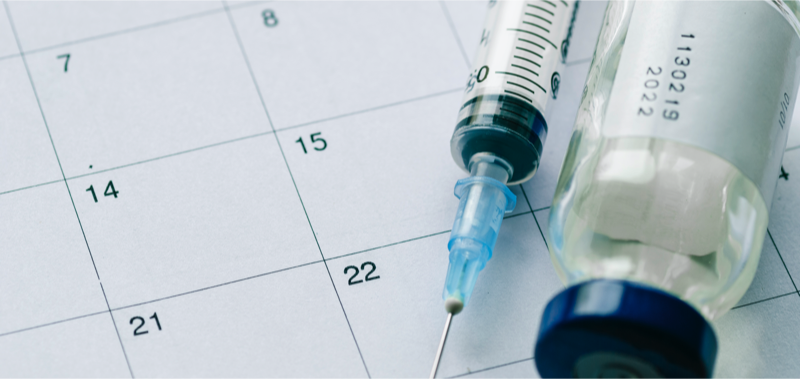
01 Jul COVID-19 Treatment, Vaccines Update
COVID-19 Treatment, Vaccines Update
Vaccines
The world is waiting for a vaccine, possibly followed by a booster dose, that will eliminate fear of the coronavirus for anyone who gets immunized. But scientists actually think a variety of vaccines will be created to battle the virus.
“Ultimately, there will be more than one vaccine,” according to Dr. Peter Hotez, dean of the National School of Tropical Medicine at Baylor College of Medicine and co-director of the Texas Children’s Hospital Center for Vaccine Development, where he is working on a COVID-19 vaccine. “There could be several vaccines that have different uses. Some vaccines might be used for older Americans at risk of disease or those with underlying comorbid conditions like diabetes or obesity. There might be some use for younger adults. Maybe some for health-care workers. Same with the other technologies that we’re talking about, like remdesivir, there may be a prophylactic use for it as well. All of this is being accelerated through a lot of studies in parallel and we’ll have to see how the target product profiles will look.”
As the coronavirus destroys economies and livelihoods, laboratories around the world are hard at work to get products out in record time. Here are several leading candidates, followed by some lesser-known contenders.
- Oxford University shocked many medical professionals when it announced it may have a vaccine that will be “widely available” by September. Researchers there had already been working on a vaccine for a similar virus, so they were able to pivot quickly to COVID-19. “Well personally I have a high degree of confidence about this vaccine, because it’s technology that I’ve used before,” says Sarah Gilbert, professor of vaccinology at the university. It’s already been found effective in animal trials and is currently being tested in humans. Before that study is complete, millions of doses will be produced in hopes of success.
- Johnson & Johnson has announced that it, too, is about to begin production of a its vaccine on an “at risk” basis, i.e. before it’s proven to work. It will be made at a facility in the Netherlands and here in the U.S. J&J partnered with subsidiary Janssen Vaccines & Prevention B.V. back in January, working with a drug platform that had been developed for Ebola, Zika and influenza.
- Moderna biotech has a vaccine candidate that recently was approved for further testing. Phase 2 will begin in the second quarter to evaluate safety, adverse reactions and efficacy of two vaccinations given 28 days apart. It will involve about 600 healthy adults and older adults. A third phase could start in the fall.
- Dynavax Technologies Corporation is making its adjuvant technology available to other companies. The tech boosts immune response to a vaccine. In addition, Dynavax has partnered with the University of Queensland, Australia, on a coronavirus vaccine of its own.
- GlaxoSmithKline is also allowing access of its vaccine adjuvant platform technology, which strengthens the response to a vaccine and decreases the amount needed per dose.
- Heat Biologics, in partnership with the University of Miami Miller School of Medicine, is in the preclinical stage of vaccine development.
- Inovio Pharmaceuticals is in a Phase 1 trial of its DNA-based vaccine that is backed by a $5 million grant from the Bill & Melinda Gates Foundation. It has launched human trials in the U.S., China and South Korea with 3,000 doses of the vaccine. It expects to have 1 million doses ready for further testing or emergency use by year’s end.
- Novavax has developed several vaccine candidates. The preclinical biotech expects at least one Phase 1 trial to start this month, with results to begin coming out in July.
- Vaxart announced plans to work on a vaccine back in January, and it’s developing an oral vaccine in the form of a room-temperature stable pill. Such a product would offer enormous advantages over injectables, which are normally refrigerated.
Whether or not a vaccine is available by the fall, it may be longer until it’s in widespread use. “Our vaccine could be ready by the fall as well,” says Dr. Hotez. “We’ll have up to 200,000 doses. But unless you’ve shown that it actually works and unless you’ve shown that it’s safe, you’re not going to do that (make it widely available). Without having the efficacy and safety data, I think you have to be really careful about bold statements (about having a vaccine ready this year). As I often like to say, these nucleic acid vaccines have been around for 30 years and offer great promise, they work in laboratory animals, but, historically, they have not worked well in people. Maybe now there’s been modifications to improve that. Let’s wait and see.”
So, the jury’s still out on both treatments and vaccines for now. But scientists are working around the clock to treat and prevent the coronavirus. That’s good news for a weary world that is looking for hope and a return to socializing with friends. It may not come this summer, but the future is looking brighter all the time.




Sorry, the comment form is closed at this time.